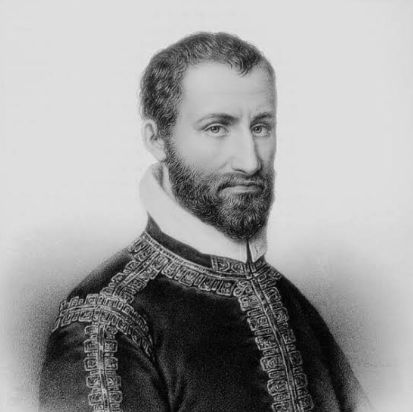Giovanni Pierluigi da Palestrina
The Master of Polyphony
Giovanni Pierluigi da Palestrina (born c. 1525, Palestrina, near Rome [Italy]—died February 2, 1594, Rome) was an Italian Renaissance composer of more than 105 masses and 250 motets, a master of contrapuntal composition.
Palestrina lived during the period of the Roman Catholic Counter-Reformation and was a primary representative of the 16th-century conservative approach to church music.
Palestrina’s musical output, though vast, maintained a remarkably high standard in both sacred and secular works. His 105 masses embrace many different styles, and the number of voices used ranges from four to eight. The time-honoured technique of using a cantus firmus (preexistent melody used in one voice part) as the tenor is found in such masses as Ecce sacerdos magnus; L’Homme armé; Ut, re, mi, fa, sol, la; Ave Maria; Tu es Petrus; and Veni Creator Spiritus. These titles refer to the source of the particular cantus firmus. Palestrina’s mastery of contrapuntal ingenuity may be appreciated to the fullest extent in some of his canonic masses (in which one or more voice parts are derived from another voice part). His ability to ornament and decorate a solemn plainchant, making it an integral part of the texture and sometimes almost indistinguishable from the other, freely composed parts, is evident from some of his masses based on hymn melodies.
By far the greatest number of masses employ what has come to be known as the parody technique, by which a composer made use either of his own music or that of others as a starting point for the new composition. Many other masses derive from musical ideas by Palestrina’s predecessors or contemporaries. Yet another type of mass is demonstrated by the nine works written for Mantua; in these the Gloria and Credo sections are so arranged that plainsong and polyphony alternate throughout. Finally, there is a small but important group of masses that are in free style, the musical material being entirely original. Perhaps the best known example is the Missa brevis for four voices.
(Britannica)
Surviving the Tests of Time
At the end of the 19th century the view that Palestrina represented the loftiest peak of Italian polyphony was in some ways detrimental to his reputation, for it cast his music into rigid preconceptions. Even more unfortunate was the insistence on “counterpoint in the style of Palestrina” in the examination requirements of academies and universities, for such requirements stultified a style that Palestrina had used with great flexibility. Generations of fledgling composers were taught to revere the music of Palestrina as a symbol of all that was pure in ecclesiastical counterpoint. Indeed, the greater part of his musical output, and in particular his masses (where his unerring sense of tonal architecture may be heard at its best), still remains worthy of admiration.
Palestrina, unlike Johann Sebastian Bach, did not have to be rediscovered in the 19th century, though the dissemination of his achievement was helped by the interest of Romantic composers. There always was a Palestrinian tradition, mainly because his music supplied the need for a well-regulated formal system to be used by the embryonic composer in presenting himself to the musical world. Strict counterpoint was associated with a technique acquired in this way. In his day, Palestrina was a senior figure who, utilizing the dominant style of his time, created works notable for their spiritual qualities and technical mastery.
(Britannica)
More Palestrina
Endless Polyphony!

